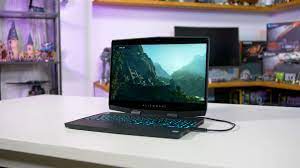In-Plane Switching is a type of monitor display and screen technology like TFT (Thin Film Transistor) and LCD (Liquid Crystal Display). LCD has to modulate properties and uses light from the unit liquid crystals which visually display the image to a flat panel of the screen.
TFT works as a display; built and marketed for enhanced colors and also black and white levels. TFT LCDs include both IPS and TN display screens. You may have an idea of the IPS screen of a laptop.
What is an IPS screen on a laptop?
In 1996 IPS was developed by Hitachi as the result of limited displays of Twisted Nematic LCDs from the old times of 1980. The display of TN was inverting colors on viewing from extreme angles and shows poor color quality on-screen.
The latest technology laptops with high-performance specs, tablets, or smartphones are equipped with IPS displays. This latest gadget allows you to watch movies, save photos, or video chat with a full view.
Today we have an improvised IPS display laptop that allows wider viewing angles and high-quality color panels by altering pixels and parallel polarizers than perpendicular ones like TN displays.
IPS versions include technologies
Since IPS was introduced people enjoyed the improved angle and color technology feature. Especially the professional got the benefit from an IPS LCD to provide wider viewing angles and color gamut which allows them accurate results. IPS versions include enhanced technologies of color and viewing angles.
Types of IPS Panels
IPS panels have different types which are currently available on the market with unique features. Some of the best types of IPS panels are mentioned below:
- IPS (Super TFT): This type of IPS screen is for a wide viewing angle.
- S-IPS (Super-IPS): Super IPS display color shift free and advanced improvement on pixel refresh timing.
- H-IPS (Horizontal IPS): This technology uses an advanced true white polarizing film that originates a natural color of white for an improved contrast ratio.
- AS-IPS (Advanced Super IPS): Advanced super IPS is made for high transmittance of light.
- E-IPS (Enhanced IPS): Enhanced IPS displays are for extended diagonal viewing angles and reductions in response time.
- P-IPS (Professional IPS): Professional IPS technology is for truer color depth and makes images more realistic.
Advantages of an IPS screen on a laptop
High-quality and expensive laptops have the capability of IPS displays or screens for better-viewing results and color adjustments. The IPS screen has a lot of advantages; a few of which are given below:
Wider viewing angles
Now you can see from extreme angles because of the parallel orientations. Moreover, with the help of polarizers, a group can easily view the display even from a distance. Only the audience watching from the corners of the display may have little diminishment in contrast and color.
Greater variety of colors
From all viewing angles, IPS displays consistent and accurate colors with 8-bit panels like red, green, and blue. Each has 8 bits so they can reproduce 24 bits altogether of a normal graphics processor.
On the other hand, most of the TN display screens have 6-bit panels and use extra settings for making it a full-color range. On the website of Japan displayInc, you can find the comparison between IPS and TN panels for color consistency.
Accurate color screen
Laptops with IPS displays may be a little pricey but have a great capability of using a backlight. This kind of laptop generates a far wider color gamut like Adobe RGB than the TN has the old RGB.
Because of the additional hues and shades IPS screen allows more realistic and true colors of life to your screen. Moreover, it massively enough fasts for streaming movies, video calls and so many other things to stable response time.
Best for touchscreens
IPS panels have the best performance displays and they do not lighten or show tailing when touched as TN LCDs. This is a really important feature for touchscreen laptops, smartphones, and tablets.
Disadvantages of IPS screen
- Sometimes we refresh and the IPS screen takes more time as compared to the TN screen. It is the reconfiguration time of the on-screen image and when the pixel changes from active to inactive state mean response time.
- This only delays for milliseconds and creates no issue for regular laptop users but the PC gamers may be affected.
- IPS panels require more power than 15%. These screens are more expensive and take a longer time to respond than TN panels.
The technical difference between IPS and TN
Both IPS and TN are different kinds of TFT LCDs. LCDs depend on the light modulating properties of energized liquid crystals which work together with filtered light polarizers to control what the screen shows.
When light passed through the polarizers by applying voltage to the crystals then the changes managed are microsecond intervals and show the images smoothly moving.
This is the quite technical difference between IPS and TN screens how their light-influencing polarizer layers are aligned when light passes through but with different orientations light is blocked.
Do you want to see what and how it happens? Let’s place liquid crystal molecules between polarizer layers and apply voltage.
Now the following things would happen:
- A)Twisted Nematic polarizers are perpendicular to each other. So, the liquid crystal molecules twist the light and it goes from vertically aligned polarizers being twisted in the crystals and passing through horizontal polarizers without voltage.
But when a voltage is applied the light will no longer get twisted. Perpendicular polarizers block light from passing through because the crystals are disturbed.
- B)IPS polarizers work opposite to the TN, as they are aligned parallel which allows all light to pass through. But the resting liquid crystal molecules twist the light to disrupt the flow.
It means when voltage is applied it lets the light to pass through the parallel polarizers and stop the liquid crystals from twisting.
Conclusion
Of course, there are several other differences between IPS display and TN screens. So the laptops with IPS screen have more unique advantages and more vulnerable viewing angles even from the extreme edges compared with the TN screen laptops.
In this article, I have explained in detail an IPS screen of a laptop. I can assure, now you have completely knowledgeable about the IPS screen. Keep visit LaptopsChamp for more useful tips and tech buying guide.
Thank you






